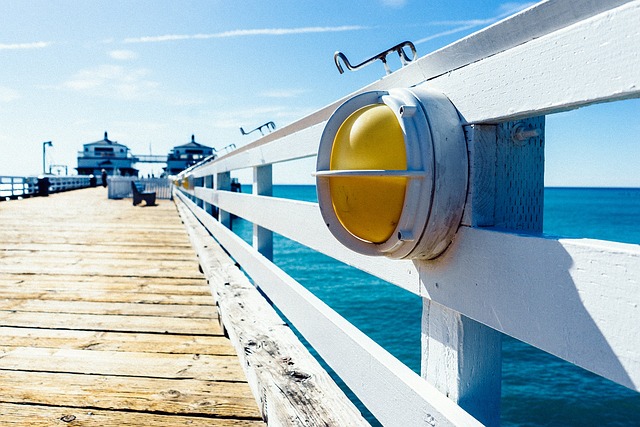Pier Installation is a vital solution for maintaining and enhancing home structural integrity, especially in challenging environmental conditions or unstable soils. By strategically placing vertical supports beneath the building, this method prevents foundation damage, stabilizes structures, and allows for property elevation without extensive demolition. Effective pier installation offers long-term stability, preserves historical structures, increases property value, and provides homeowners with peace of mind against structural issues like settling and shifting.
Home structural integrity is a cornerstone of safe and secure living. This comprehensive guide delves into the essential aspects of maintaining and strengthening your home’s foundation. We explore common issues, highlighting pier installation as an effective solution for reinforcing structures. Learn about various pier types, their applications in residential construction, and the numerous benefits of this method. Discover a step-by-step installation process and gain insights on long-term care to ensure optimal structural integrity.
Understanding Structural Integrity: The Foundation of a Safe Home

Maintaining structural integrity is paramount in ensuring a safe and secure home environment. It involves understanding the foundational elements that support your structure, such as footings, walls, and beams. These components work together to bear the load of the building and prevent collapse or damage under various conditions. One effective solution for enhancing structural integrity, particularly in areas prone to seismic activity or soil instability, is pier installation.
Pier Installation involves the strategic placement of support piers beneath the structure. These piers transfer the load from the building to a more stable layer of soil below, often bedrock. This method can strengthen older homes, prevent foundation cracks, and even elevate structures to higher levels without extensive demolition. By enhancing structural integrity through pier installation, homeowners gain peace of mind knowing their property is protected against potential hazards and built to withstand challenging environmental conditions.
Common Issues Affecting Home Structural Integrity

Home structural integrity is a critical aspect of ensuring safety and longevity for any residence. Common issues affecting this integrity often stem from foundational problems, such as settling, shifting soil, or inadequate initial construction. These factors can lead to cracks in walls, floors that are not level, doors and windows that do not close properly, and even structural collapse in severe cases.
One effective solution for addressing these issues is pier installation. Piers, typically made of concrete or steel, are driven deep into the ground to provide additional support for the home’s foundation. This method is particularly useful for homes built on weak soil or in areas prone to settling. By distributing the load of the structure more evenly, pier installation can stabilize and strengthen the entire home, ensuring its structural integrity for years to come.
Pier Installation: A Effective Solution for Strengthening Structures

Pier Installation offers a highly effective solution for strengthening existing structures and enhancing their structural integrity. This method involves the strategic placement of vertical supports, or piers, beneath the building to provide additional support and stabilize the foundation. By transferring some of the structure’s load onto these piers, the pressure on the original foundation is reduced, effectively mitigating potential weaknesses and preventing further damage.
This technique is particularly useful for older buildings with deteriorating foundations or those situated in areas prone to seismic activity or high water tables. Pier Installation can be tailored to fit various structural needs, making it a versatile solution. Whether reinforcing a basement, supporting a historical structure, or stabilizing a residential property, this method provides a durable and long-lasting reinforcement system, ensuring the building’s structural health for years to come.
Types of Piers and Their Applications in Residential Construction

In residential construction, piers play a critical role in ensuring structural integrity and stability, especially on unstable soils or uneven terrains. There are several types of piers available for various applications, each offering unique advantages depending on project requirements. For instance, concrete pier installation is a common solution for new constructions or renovations, providing a robust foundation that can withstand heavy loads. Steel piers, known for their strength-to-weight ratio, are often preferred in areas prone to earthquakes or high wind loads.
These structural supports are versatile and can be customized to fit different depth and load requirements. For residential properties with existing structures, micropiers are a lightweight yet effective option, ideal for reinforcing weak spots without extensive excavation. Pile driving techniques are employed to install these piers, ensuring a secure hold in various soil conditions. Effective pier installation is crucial for preventing issues like foundation settling or shifting, thus safeguarding the long-term stability and value of residential buildings.
Benefits of Choosing Pier Installation for Structural Repair

Pier installation is a highly effective and efficient solution for structural repair, offering numerous benefits that make it a popular choice among professionals. One of the key advantages is its ability to provide long-lasting stability and support to existing structures. By strategically placing piers beneath weak or damaged sections, the overall load bearing capacity of the building can be significantly enhanced, ensuring its structural integrity for years to come.
This method also proves to be cost-effective in the long run, as it allows for the preservation of the original structure rather than complete reconstruction. Pier installation is particularly useful for older homes or buildings that may have settlement issues or foundation problems. It provides a discreet and aesthetically pleasing solution, with minimal disruption to the property’s exterior and interior, making it an ideal choice for those seeking a subtle yet powerful fix for their home’s structural needs.
The Installation Process: Step-by-Step Guide to Ensuring Stability

The installation process for structural integrity solutions, specifically pier installation, involves a meticulous series of steps designed to ensure stability and longevity. It begins with a thorough inspection to identify the best locations for piers, considering factors like soil conditions and existing structure load-bearing capacity. Next, the site is prepared by clearing any obstructions and excavating to create a solid foundation for the piers.
This involves digging trenches of specific depths and widths, carefully planning for the placement of structural piers. The piers themselves are then installed using specialized equipment to ensure they are aligned correctly and sit securely in place. Once in position, pier caps are attached, providing a stable base for any additional construction or reinforcement work required to restore or enhance the home’s structural integrity.
Long-term Care and Maintenance for Optimal Structural Integrity

Maintaining a home’s structural integrity is an ongoing process, and long-term care is essential to ensure its longevity. Regular maintenance checks should be performed to identify any potential issues early on. One effective solution for enhancing structural stability is pier installation. This process involves strategically placing supports beneath the foundation to provide additional strength and prevent further deterioration.
By investing in regular care and implementing solutions like pier installation, homeowners can safeguard their properties against common structural problems. It is a proactive approach that ensures the house remains safe, sound, and stable for many years to come, providing peace of mind for residents and increasing the overall value of the property.
